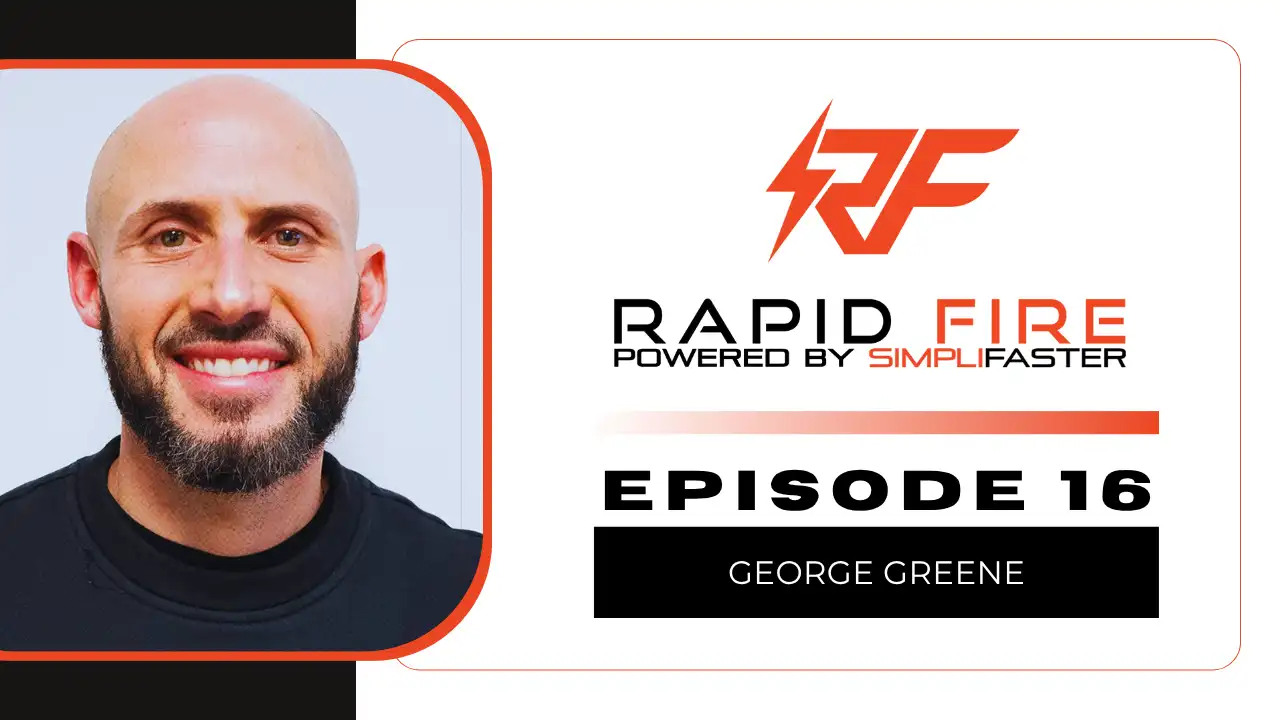“We call it get fast, fast—in six weeks, their team is so much faster.”
Simplicity. Speed. Fittingly, Tony Villani—founder of SHREDmill and XPE Sports—joins SimpliFaster’s Nate Huffstutter to kick off the debut episode of our new interview series, The Connection. Keeping it simple, keeping it fast. Behind the scenes at SF, we have opportunities to participate in get-to-know-you and educational meetings with the founders and key stakeholders for products in our store—recognizing how much we learn in those low-key sessions, we decided to replicate the same casual, straight from the horse’s mouth experience for our readers.
Recurring troubleshooting tips? Common misconceptions? Best practices, underused features, and the latest innovations? The Connection has it covered. More questions of your own? Just ask.
Connection Short Take #1: Tony Villani touching on the SHREDmill Gear system.
“The patented magnetic resistance system is kind of magically built to acceleration-profile you at 50-65% of your maximum speed, which has now come out to be the number one metric for force production,” Villani says. “You always start an initial run—or you hope you do—with power and force. In 3-5 steps, you’re going to get to 70% of your max speed.”
You always start an initial run—or you hope you do—with power and force. In 3-5 steps on @SHREDmillSpeed, you’re going to get to 70% of your max speed, says @Tony_Villani_. Share on XThe Connection Episode #1. Watch the full episode with SHREDmill founder Tony Villani.
Where Villani sees SHREDmill as a game-changer is in training game speed—a principal focus for him as an elite performance coach, similar to peers like Les Spellman who targets creating separation in his speed model and Chris Korfist, who prioritizes the opening steps and shapes of acceleration. Considering the connection to game performance, some coaches may see athletes gripping the handrails and accelerating on the SHREDmill and question the transferability to game speed. Villani, however, explains how that perceived negative is actually a positive in terms of isolating a key quality that can be hard to replicate otherwise.
“This is holding them in the exact angle we want them to exit. And it’s hammering home that 45-55 degree body lean and it’s letting them concentrate on leg power to get there.”
Connection Short Take #2: Tony Villani on pairing exercises with SHREDmill in the weight room.
“Do you like deadlifts, do you like cleans, do you like box jumps, do you like broad jumps, do you like squats—what do you like to do for force production? When you pair the weight room exercise with the exit velocity exercise at 3-5 steps, you’re getting the athlete’s brain and body to learn what they’re trying to do and it gives you a huge effect.”
When you pair the weight room exercise with the exit velocity exercise at 3-5 steps, you’re getting the athlete's brain and body to learn what they’re trying to do and it gives you a huge effect, says @Tony_Villani_. Share on XFor more on using SHREDmill in performance training, read:
- David Neill on teaching speed technique and making speed gains in a high school program.
- Mark Hoover on using SHREDmill in circuits with large groups.
- Rob Assise’s review on features, functions, and methods in the private sector.
Since you’re here…
…we have a small favor to ask. More people are reading SimpliFaster than ever, and each week we bring you compelling content from coaches, sport scientists, and physiotherapists who are devoted to building better athletes. Please take a moment to share the articles on social media, engage the authors with questions and comments below, and link to articles when appropriate if you have a blog or participate on forums of related topics. — SF







